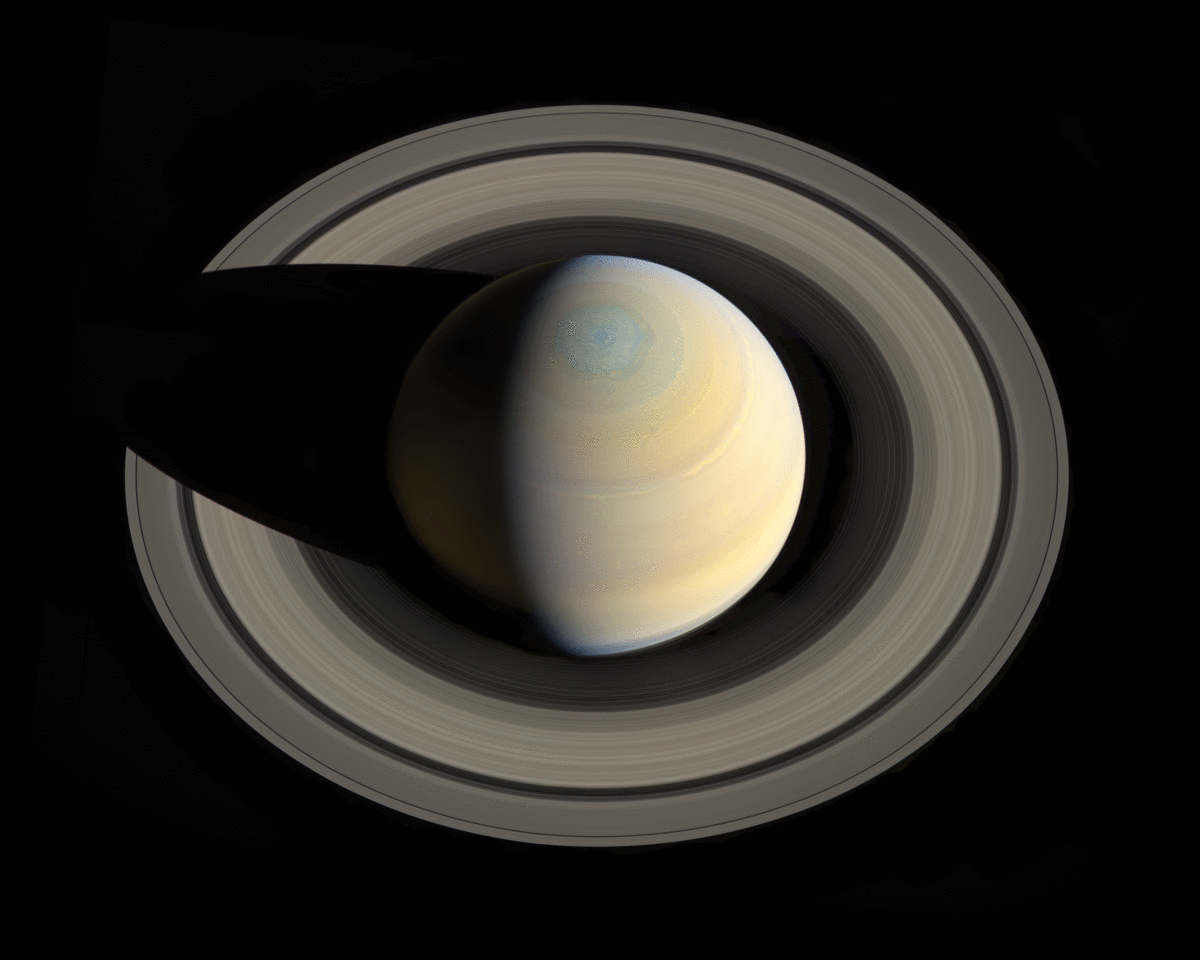Saturn’s rings are disappearing, and we don’t know how much longer they will be there.
Astronomers have known this since the 1980s SaturnThe icy innermost rings of is steadily eroding into its upper atmosphere. The downpour occurs at such a rapid rate that it creates an Olympic-size swimming pool of water Rain on the gas giant daily. But how fast iconic ring system shrinks – what determines when it disappears – remains an open question.
Fortunately, NASA is powerful James Webb Space Telescope (JWST or Webb), whose powerful instruments have so far spied distant galaxies from the early Universe, will soon study this intriguing phenomenon found much closer to home.
“We’re still trying to figure out how fast they’re eroding,” said James O’Donoghue, a planetary scientist at the Japan Aerospace Exploration Agency who will lead the new effort to determine how long Saturn’s rings will last, in a opinion (opens in new tab) released Monday (April 17). “Current research indicates that the rings will only be part of Saturn for a few hundred million years.”
Related: Saturn: Everything you need to know about the sixth planet from the sun
To better estimate the lifespan of Saturn’s iconic rings, JWST and the Keck Observatory in Hawaii will be part of a long-term observing campaign to study the planet. The telescopes will help monitor how the ‘ring rain’ phenomenon fluctuates throughout a season on the gas giant, which lasts about seven Earth years thanks to its orbit far from the Sun.
Astronomers are expecting interesting data from the campaign, as previous surveys have shown that huge amounts of ring material are constantly falling on Saturn. For example data sent home from NASA Cassini The spacecraft — which cruised 22 times straight through the gap between Saturn and its rings during its death dive in 2017 — had shown that somewhere between 880 pounds (400 kg) and 6,000 pounds (2,800 kg) of icy rain pours onto the planet every second and warming of the upper atmosphere.
At this rate, the rings could disappear in about 300 million years. While that may seem a long way off, the Deluge brings the symbolic ring system to “a relatively quick death” on cosmic timescales. But the rate at which ring material is raining down on the planet is still largely uncertain; the rings could disappear as quickly as 100 million years or stay there for 1.1 billion years, astronomers say.
“Right now we only have a very broad estimate,” O’Donoghue told Space.com on Wednesday (April 26). “We want to make further observations that narrow down this influx area.”
According to the current research, space rocks and the sun radiation Easily disturb the ring particles and give them an electric charge, causing them to bind to the gas giant’s magnetic field lines. Saturn’s gravity then pulls the ice particles, guided by the magnetic fields, to pour into the planet’s upper atmosphere, but not always at the same speed.
As Saturn moves in its 29.5-year orbit around the Sun, it moves toward and away from the Sun, and its rings do the same. This tilt determines how much solar radiation affects the innermost layers of the ring system — where much of the freezing rain is triggered — and may also play a role in how much material falls on Saturn, astronomers say.
“We suspect that the ring rain will slow down as the rings come on edge with the Sun,” O’Donoghue told Space.com. “And that as they incline toward the sun, the influx of ring rains will increase.”
Therefore, his team will use the Webb and Hawaiian Keck observatories to measure emissions emanating from a specific hydrogen molecule in Saturn’s upper atmosphere. Measurements of this molecule increase when a small amount of material from Saturn’s ice rings tumbles into its atmosphere, but it dwindles during copious ring rains, O’Donoghue told Space.com. Monitoring these shifts in these hydrogen emissions over a full season on Saturn could help the team determine how much ring material needs to rain on the planet.
“The instrument on Keck that we previously used for this has been updated, and we’ve never used JWST for this before,” he said. “This will give us a better estimate of the ring influx than ever before.”
While the new research will help predict the fate of the rings, astronomers studying Saturn’s world are continuing the decades-old debate about how and when the planet’s rings formed in the first place. Various models had shown that the rings had been a permanent structure around Saturn for 4.5 billion years – when the solar system formed itself, but data from the Cassini spacecraft painted a more youthful picture, aging them by only 10 million to 100 million years old.
The discrepancy arose because older rings are often dimmer, but Cassini captured Saturn’s rings bright, suggesting their youth. In 2019, astronomers who resumed the debate (opens in new tab) suggested that the heavy ring rain might be responsible for the rings appearing young, returning to the original notion that the rings are as old as the solar system after all.
“I think it would be fascinating if the lifespan of the rings was only about 100 million years and their age was billions of years,” O’Donoghue told Space.com. “Because it means we evolved just in time to see them before they disappeared.”
Follow Sharmila Kuthunur on Twitter @Shamilak (opens in new tab). Follow us @spacedotcom (opens in new tab)or on Facebook (opens in new tab) And Instagram (opens in new tab).
#rings #Saturn #disappear #James #Webb #Space #Telescope #reveal #time #left







